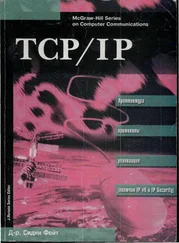Cybercrime is now about half of all crime, both by volume and by value, at least in developed countries. Whether it is slightly more or less than half depends on definitions (do you include tax fraud now that tax returns are filed online?) and on the questions you ask (do you count harassment and cyber-bullying?) – but even with narrow definitions, it's still almost half. Yet the world's law-enforcement agencies typically spend less than one percent of their budgets on fighting it. Until recently, police forces in most jurisdictions did their best to ignore it; in the USA, it was dismissed as ‘identity theft’ and counted separately, while in the UK victims were told to complain to their bank instead of the police from 2005–15. The result was that as crime went online, like everything else, the online component wasn't counted and crime appeared to fall. Eventually, though, the truth emerged in those countries that have started to ask about fraud in regular victimisation surveys 12.
Colleagues and I run the Cambridge Cybercrime Centre where we collect and curate data for other researchers to use, ranging from spam and phish through malware and botnet command-and-control traffic to collections of posts to underground crime forums. This section draws on a survey we did in 2019 of the costs of cybercrime and how they've been changing over time [92].
Computer fraud has been around since the 1960s, a notable early case being the Equity Funding insurance company which from 1964-72 created more than 60,000 bogus policies which it sold to reinsurers, creating a special computer system to keep track of them all. Electronic frauds against payment systems have been around since the 1980s, and spam arrived when the Internet was opened to all in the 1990s. Yet early scams were mostly a cottage industry, where individuals or small groups collected credit card numbers, then forged cards to use in shops, or used card numbers to get mail-order goods. Modern cybercrime can probably be dated to 2003–5 when underground markets emerged that enabled crooks to specialise and get good at their jobs, just as happened in the real economy with the Industrial Revolution.
To make sense of cybercrime, it's convenient to consider the shared infrastructure first, and then the main types of cybercrime that are conducted for profit. There is a significant overlap with the crimes committed by states that we considered in the last section, and those committed by individuals against other individuals that we'll consider in the next one; but the actors' motives are a useful primary filter.
2.3.1 Criminal infrastructure
Since about 2005, the emergence of underground markets has led to people specialising as providers of criminal infrastructure, most notably botnet herders, malware writers, spam senders and cashout operators. I will discuss the technology in much greater detail in section 21.3; in this section my focus is on the actors and the ecosystem in which they operate. Although this ecosystem consists of perhaps a few thousand people with revenues in the tens to low hundreds of millions, they impose costs of many billions on the industry and on society. Now that cybercrime has been industrialised, the majority of ‘jobs’ are now in boring roles such as customer support and system administration, including all the tedious setup work involved in evading law enforcement takedowns [456]. The ‘firms’ they work for specialise; the entrepreneurs and technical specialists can make real money. (What's more, the cybercrime industry has been booming during the coronavirus pandemic.)
The first botnets – networks of compromised computers – may have been seen in 1996 with an attack on the ISP Panix in New York, using compromised Unix machines in hospitals to conduct a SYN flood attack [370]. The next use was spam, and by 2000 the Earthlink spammer sent over a million phishing emails; its author was sued by Earthlink. Once cyber-criminals started to get organised, there was a significant scale-up. We started to see professionally built and maintained botnets that could be rented out by bad guys, whether spammers, phishermen or others; by 2007 the Cutwail botnet was sending over 50 million spams a minute from over a million infected machines [1836]. Bots would initially contact a command-and-control server for instructions; these would be taken down, or taken over by threat intelligence companies for use as sinkholes to monitor infected machines, and to feed lists of them to ISPs and corporates.
The spammers' first response was peer-to-peer botnets. In 2007 Storm suddenly grew to account for 8% of all Windows malware; it infected machines mostly by malware in email attachments and had them use the eDonkey peer-to-peer network to find other infected machines. It was used not just for spam but for DDoS, for pump-and-dump stock scams and for harvesting bank credentials. Defenders got lots of peers to join this network to harvest lists of bot addresses, so the bots could be cleaned up, and by late 2008 Storm had been cut to a tenth of the size. It was followed by Kelihos, a similar botnet that also stole bitcoins; its creator, a Russian national, was arrested while on holiday in Spain in 2017 and extradited to the USA where he pled guilty in 2018 [661].
The next criminal innovation arrived with the Conficker botnet: the domain generation algorithm (DGA). Conficker was a worm that spread by exploiting a Windows network service vulnerability; it generated 250 domain names every day, and infected machines would try them all out in the hope that the botmaster had managed to rent one of them. Defenders started out by simply buying up the domains, but a later variant generated 50,000 domains a day and an industry working group made agreements with registrars that these domains would simply be put beyond use. By 2009 Conficker had grown so large, with maybe ten million machines, that it was felt to pose a threat to the largest websites and perhaps even to nation states. As with Storm, its use of randomisation proved to be a two-edged sword; defenders could sit on a subset of the domains and harvest feeds of infected machines. By 2015 the number of infected machines had fallen to under a million.
Regardless of whether something can be done to take out the command-and-control system, whether by arresting the botmaster or by technical tricks, the universal fix for botnet infections is to clean up infected machines. But this raises many issues of scale and incentives. While AV companies make tools available, and Microsoft supplies patches, many people don't use them. So long as your infected PC is merely sending occasional spam but works well enough otherwise, why should you go to the trouble of doing anything? But bandwidth costs ISPs money, so the next step was that some ISPs, particularly the cable companies like Comcast, would identify infected machines and confine their users to a ‘walled garden’ until they promised to clean up. By 2019 that has become less common as people now have all sorts of devices on their wifi, many of which have no user interface; communicating with human users has become harder.
In 2020, we find many botnets with a few tens of thousands of machines that are too small for most defenders to care about, plus some large ones that tend to be multilayer – typically with peer-to-peer mechanisms at the bottom that enable the footsoldier bots to communicate with a few control nodes, which in turn use a domain generation algorithm to find the botmaster. Fragmenting the footsoldiers into a number of small botnets makes it hard for defenders to infiltrate all of them, while the control nodes may be located in places that are hard for defenders to get at. The big money for such botnets in 2020 appears to be in clickfraud.
Читать дальше











